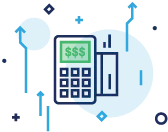
TABLE OF CONTENTS
- What Is a Credit Card Processing Outage?
- How a Credit Card Outage Affects Businesses
- Possible Causes of Credit Card Outages
- What to Do During Credit Card Processing Outages
- Options for Accepting Credit Card Payments Offline
- How Backup Processing for In-Person Transactions Benefits Businesses
- Final Thoughts on Credit Card Processing Outages
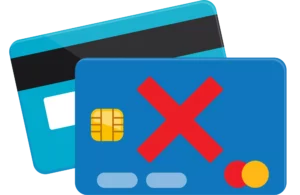
Typically, a credit card processing outage is a rare occurrence. Most days credit card processing is smooth sailing. But on occasion, your power goes out, your WiFi is on the fritz, or worse, you have no idea to what the “system error” message flashing on the payment terminal refers. All you know is that you’re experiencing a processing outage—and that you need to get it fixed as soon as possible. Every minute that passes during this time is lost revenue for your business, and that’s a term no business owner wants to hear. So why do credit card processor outages happen in the first place, and what can you do to avoid them in the future? Let’s take a closer look.
What Is a Credit Card Processing Outage?
The system that transmits data from a customer’s credit card to your merchant account is called a payment processor. When this system is disrupted, payment cannot go through, resulting in a credit card processing outage.
Sometimes this disruption happens on your end due to equipment failure or a specific technical issue. Other times the problem can be more widespread, resulting from issues with your payment processor or internet provider. Regardless of what the disruption is, you’ll need to troubleshoot to find the key source of the problem. As a business owner, there’s a good chance that you will run into a processing outage at least once, so it is crucial to be prepared beforehand.
How a Credit Card Outage Affects Businesses
Depending on the nature of your industry, a credit card processing outage can have varying levels of impact on your business. At a minimum, the outage presents the inconvenience of shutting down normal operations while drastically affecting the customer experience. No small business owner wants to tell an interested customer that they’ll have to come back later, so in this situation every second counts. Operating as a cash-only business during this time can limit your potential client base, which can result in lower profitability for you.
If you find yourself in this unfortunate situation, try to find workarounds in the meantime. You’ll never be able to control when and how network failures or power outages happen, but you can try to mitigate the incident with backup equipment and contingencies.
Possible Causes of Credit Card Outages
The cause of a credit card processing outage can come from any number of issues—connectivity, hardware malfunctions, processor failures, and even downed power lines. Often, the cause won’t be clear at first, but once you understand the root of the cause, you’ll be better prepared to either fix it or wait it out.
Credit card processing system outage
If your payment provider is having issues, hundreds of major brands could be affected as well. A great example of this is an incident that occurred in 2021, where a major payment processor lost service, and businesses across the country temporarily lost connection. This type of outage happens at the processor level and there isn’t much that you can do to prepare for it other than to have a second merchant account on hand. If this isn’t the case, while you have some downtime, try to find out as much as you can about your provider from their social media accounts, website, or customer service line. You can also talk to your account rep to find out more information about the outage and when it might be back online.
Credit card machine malfunction
As stated above, there are systematic outages that occur via payment providers, but another major type of outage happens when the credit card machine itself stops working. If there is a hardware glitch, or if the machine isn’t compatible with the software installed, the card reader will prevent any transactions from taking place. To combat this, you can perform a software update to get everything up to speed, and it’s also a good habit to check for software updates regularly. While taking payment in person, your physical hardware is what keeps everything linked to the internet, so if it’s defective in any way, you’re likely to experience an outage.
Problems with internet connectivity
Credit cards are processed through the internet, whether the connection is through a landline, Wi-Fi, or mobile network. This means that without internet, no transactions can be completed. Oftentimes, connectivity issues happen on your end whether it be software or hardware complications. A good starting point in this dilemma is to call your processor to see what’s going on and to try rebooting your router and troubleshooting your Wi-Fi signal.
Occasionally, the outage can happen at your internet provider’s level. Depending on your service, this can be a localized problem or even a regional or country-wide outage, either way, you’re stuck until it’s resolved. If you’re having trouble getting through to your provider, try looking at a website like Downdetector for any reported issues in your area.
Widespread power outage
Another reason connection may fail is due to an actual power outage. These possibilities include a downed power line, inclement weather, or widespread power grid issues. Bad storms can also easily affect your internet cables and even your cell phone service. When this happens, it can be difficult to interpret what’s going on.
If you can, get in touch with your power company to report the outage and request timely estimates on repairs. You can also be proactive and have your property inspected for unstable tree limbs or any line damage that could pose a problem in a storm.
What to Do During Credit Card Processing Outages
The very first thing to do during a processing outage is to assess the source of the problem so that you can take the appropriate steps to deal with the issue. Here are some particular things that you can do to help manage the process.

Communicate with your processor
Communicate early and often with your payment processor until the outage has been diagnosed. Getting back up and running after an outage is something every payment processor should be able to assist you with, especially if you’re using a payment processor suitable for your industry. Providers that understand the nuances of your business will be far more efficient in helping you problem-solve to get you back up and running fast.

Communicate with your customers
In addition, it’s also important to communicate with your customers—especially if the outage is taking longer to resolve than you anticipated. Depending on the nature of the issue, think about redirecting your customers to your online store or your mobile app. Get ahead of any customer complaints by letting them know ahead of time with a temporary sign on the door or by announcing the outage on social media. Afterward, you can send updates when you’re back online, and customers can respond and share information about specific store locations, etc. A good way to turn this negative circumstance into a more positive one is by sharing a discount code with your customers to help make up for their inconvenience.

Troubleshoot for hardware issues
To detect if your issue is hardware-based, be sure to check the other terminals to see if it’s a single-unit failure or a system-wide problem. Look to see if there are any software updates you may have missed. If the problem persists after rebooting, contact your payment processor, it could be that you need to repair or replace your machine.
It’s also important that the terminals used are compatible with the payment processor itself. Unsupported card readers often won’t work at all or will stop working eventually. So your best bet here is to acquire your hardware from the same source as your payment processing services.
Finally, you should note that many newer credit card readers demand a faster connection these days, so if you discover yourself running into a “system offline” message, it would certainly benefit you to figure out if your connection speed is too slow. Some key things to look out for are internet signal boosters or slightly older equipment made for slower connectivity speeds (like 3G).
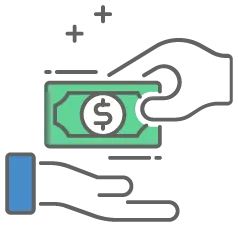
Provide alternative payment options
The best way to get you through an outage is to provide alternative payment solutions to your customers. The most obvious choice during a disruption is a cash payment option. Try incentivizing customers to pay in cash by offering some sort of cash discount program, or temporary merchandise credit if they need to leave and return.
To sidestep offline issues, you can help to fill the gap by implementing a wireless payment processing option that will turn your cell phone into a card reader via a mobile app. Other forms of alternative digital payment include PayPal, ApplePay, Amazon Pay, Google Pay, and many buy now, pay later (BNPL) installment plants. Another option is to invite your customers to visit your online store or to make purchases via your mobile app. Often times cellular data will still be viable, even when power or Wi-Fi is not.
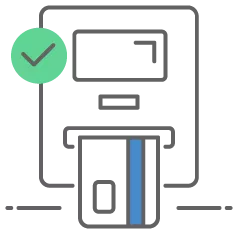
Utilize offline payment processing terminals
If you are operating your business solely in person, you should also always have a backup mobile swiper on hand as it functions through a Bluetooth connection, not Wi-Fi. You can usually purchase one from your gateway company when you open a merchant account. Prior to the 1990s, merchants processed credit card transactions via an imprinting device using carbon paper and a sliding bar. If you still have one of these classic machines, it’s a great time to pull it out!
One thing that you’re not allowed to do is to write down the customer’s credit card information and manually enter it later on. This action is not permitted by PCI DSS (Payment Card Industry Data Security Standards) compliance standards. Only PCI DSS-approved software is permitted to store a customer’s card details in an offline-capable system.
However, if you have a customer consent form to sign, you are authorized to keep their card details until you no longer need them. The only downside here is that you run the risk of the customer canceling the card or changing their consent before the transaction goes through. Although this is slightly risky, it is still a good way to process transactions during an outage.
To learn more about safely storing customer card information, check out our guide on best practices for storing credit card information.
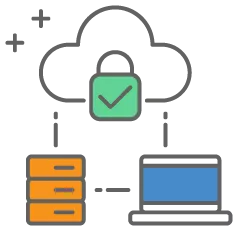
Purchase a backup generator for blackouts
Depending on the size and nature of your business, investing in a commercial backup generator can be a huge advantage to you, especially if your competition is down during a widespread outage. This is particularly true if you are operating in an inclement-weather zone, as outages are more likely to occur. If you’re thinking about investing in a generator, make sure to do your research ahead of time because there are many types to choose from, all catering to different business needs.
Options for Accepting Credit Card Payments Offline
Some cards with an NFC (contactless chip) can be accepted offline, but some cannot. In the instance where they can’t, it is important to jot down your customer’s phone number so that you can give them a phone call when the internet is back on. In this case, your customer can either return to pay you in person, or you can take their payment over the phone. Essentially, this option is hugely helpful in a bind, but even for those cards without the feature, there are still workarounds.
How Backup Processing for In-Person Transactions Benefits Businesses
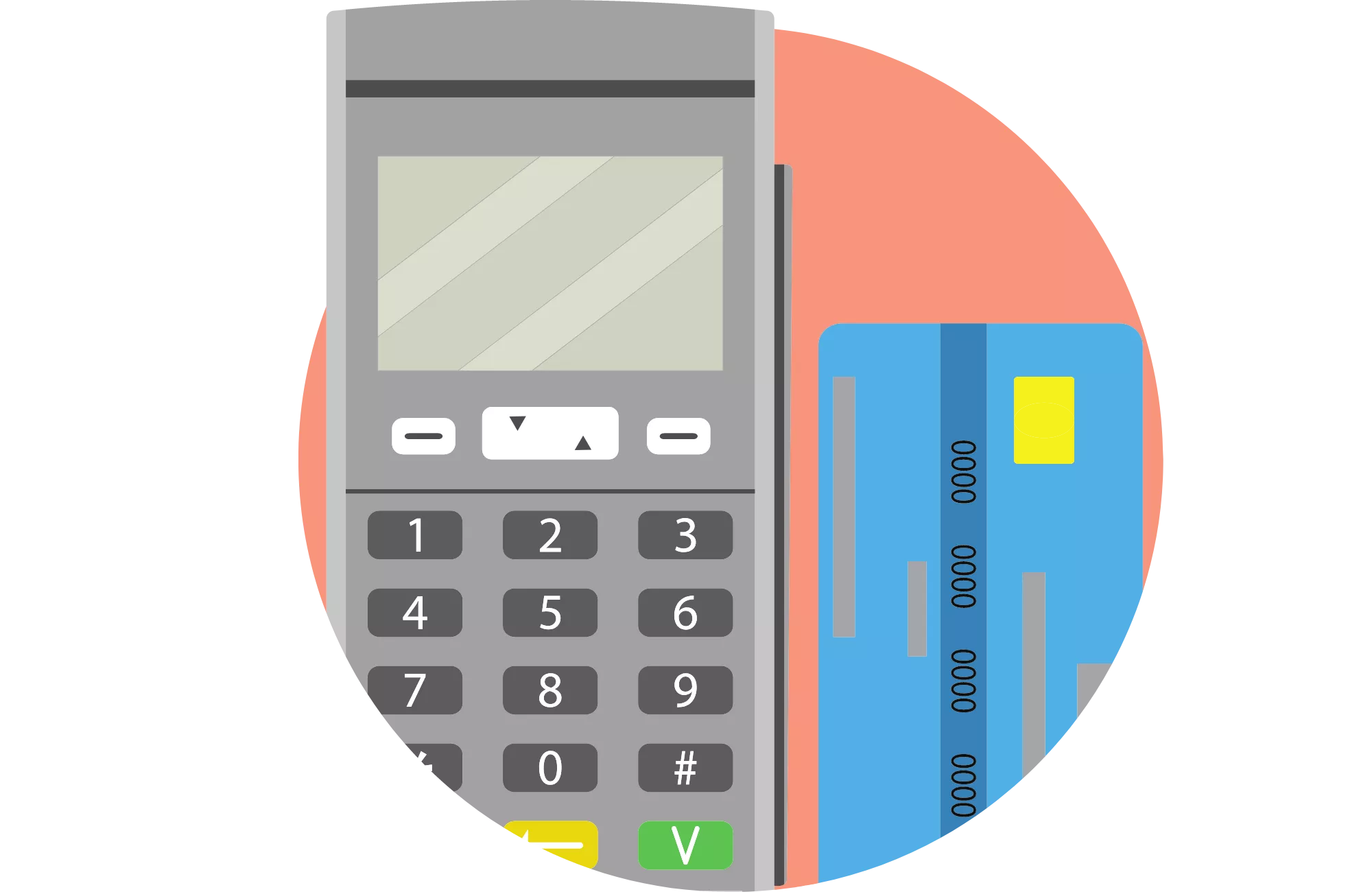
Nowadays it’s increasingly common to offer multiple payment gateways for eCommerce transactions. However, in-person transactions don’t always have that same luxury. Many POS systems use a similar software where the data from the transaction is stored in the queue until an internet connection is regained. At this point, the terminal sends the transaction for approval and it’s then completed. These savvy systems are specifically designed to store credit card details offline until a connection is restored.
Final Thoughts on Credit Card Processing Outages
In conclusion, life is unpredictable so it’s best to plan for the worst when your livelihood is on the line. Whether it’s a power outage that affects the internet or a hardware failure, businesses suffer losses when credit card processing goes offline. Your business can prepare for the incident in a few ways; by getting backup or offline processing technology, by digging out an old credit card machine, or by discovering new, alternative forms of payment for your customers. By consulting with an experienced credit card processor, you can acquire the tools necessary to prepare your business for an outage.





